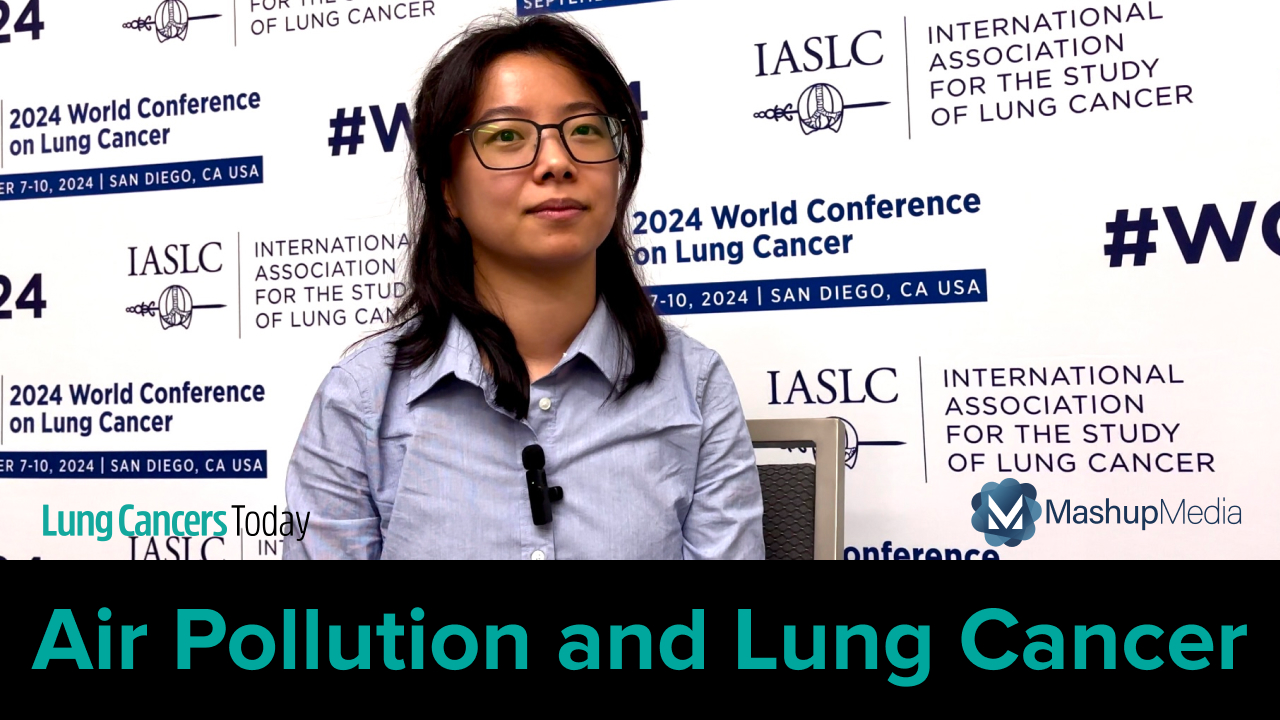Global Perspectives on Biomarker Testing in Lung Cancer: Dr. Smeltzer Unpacks Results From IASLC 2024 Survey
By Matthew Smeltzer, PhD, Cecilia Brown - Last Updated: February 28, 2025Matthew Smeltzer, PhD, of The University of Memphis, discusses results from the 2024 International Association for the Study of Lung Cancer (IASLC) Global Survey on Biomarker Testing that he presented during the IASLC 2024 World Conference on Lung Cancer.
IASLC conducted its first biomarker survey several years ago to gain an understanding of the processes surrounding testing and the barriers to optimal testing, Dr. Smeltzer explained.
“We wanted to understand the landscape around biomarker testing globally,” he said.
The results of the first survey, which were published in 2018, provided critical insights on the state of biomarker testing around the world, showing that there was low adoption of biomarker testing due to factors including cost, lack of access and awareness, and long turnaround times.
“Testing rates were suboptimal,” Dr. Smeltzer explained. “We found some barriers that need to be addressed, and we found that there are issues globally with this. It’s not just one area or the other, it’s not just one setting of care or the other, but there a lot of… issues with making this happen in an optimal way.”
The most recent survey was launched in spring 2024 to evaluate changes in biomarker testing since the initial survey. It was important to conduct the survey again because of the evolving treatment landscape and growing number of targeted therapies for lung cancer.
“We need biomarker testing for almost everyone with lung cancer now and that is different than what the landscape was in in 2018,” Dr. Smeltzer explained.
The 2024 survey received nearly 1,677 responses across 90 countries and 14 disciplines. It showed that 67% of respondents estimated that more than half of patients with lung cancer in their country received biomarker testing, which was a significant increase from 39% in the 2018 survey.
In addition, nearly all respondents (98.3%) reported they believe “biomarker testing significantly impacts outcomes” and 91.2% reported that they have a “clear understanding of who should receive testing.” However, only 63.4% and 29.4% responded that it was “highly important to perform biomarker testing” in patients with late-stage and early-stage lung cancer, respectively.
“There are still a lot of individuals that are being treated across the world without having this [biomarker] information,” Dr. Smeltzer said. “There’s still a gap in the implementation, but it seems the awareness is improving somewhat, and the testing potentially is improving somewhat in terms of barriers.”
The survey also examined barriers to biomarker testing, finding that cost remains the top barrier to testing, reported by 27.2% of respondents.
“Focus groups, especially around the different regions of the world, highlighted that cost is a complex, multifaceted issue. When people say cost is a barrier, they might mean different things,” Dr. Smeltzer said. “I think there’s more work to do to dig in and say, ‘What cost? Is it perceived cost to the patient? Is it that there’s not money to support running the test itself? Is it the cost to the whole health system?’”
Beyond cost, other commonly reported barriers to testing were time (13.9%), sample quality (13.8%), access (12.8%), and awareness (8%). In addition, the survey showed that 26% of respondents were not aware of any guidelines surrounding biomarker testing for lung cancer.
“In particular, the 26% that are not aware of any biomarker testing guidelines, [that] is an area where we could disseminate some tools that we already have,” Dr. Smeltzer said.
The survey also showed that 16% of respondents reported they have not received any additional training on next-generation sequencing (NGS) since their medical training.
“There’s an opportunity there to make sure everybody gets additional education because we know that this NGS field moves rapidly,” Dr. Smeltzer explained.
With these survey results, it’s critical to identify potential solutions to overcome barriers to testing while improving education and awareness.
“The respondents identified implementing testing protocols as a potential solution to help the process,” Dr. Smeltzer said, noting that respondents also reported that interventions to “optimize reimbursement” for biomarker testing could be another potential solution.
In addition, administrative and organizational support, as well as improving access and availability were noted as potential solutions. Dr. Smeltzer explained the next steps, which include the IASLC launching a series of initiatives based on the data to target improved awareness, access, processes, and policy.
“We’ll be disseminating the results of the survey in multiple ways, with the regional-specific results and forthcoming manuscripts, and just trying to spread the word about where we are… so that we can get multifaceted approaches from multiple people trying to find solutions and solve these problems in terms of access and process,” he said.







 © 2025 Mashup Media, LLC, a Formedics Property. All Rights Reserved.
© 2025 Mashup Media, LLC, a Formedics Property. All Rights Reserved.